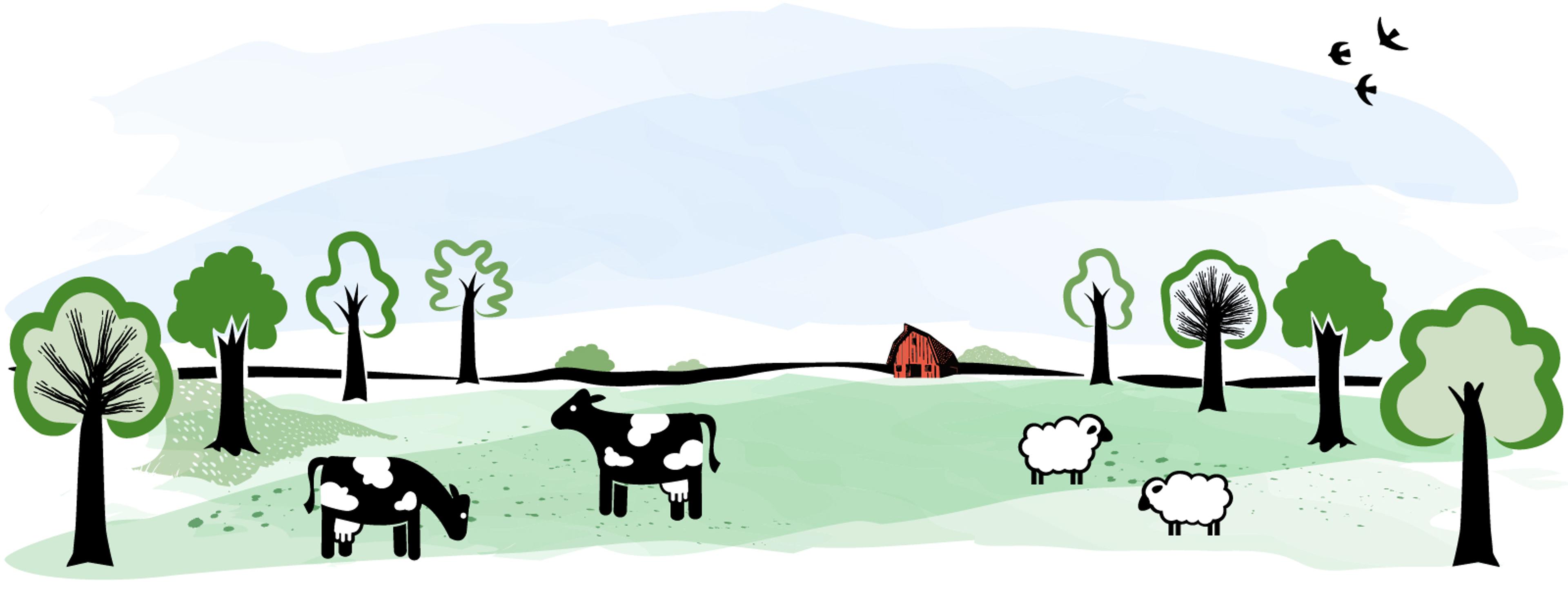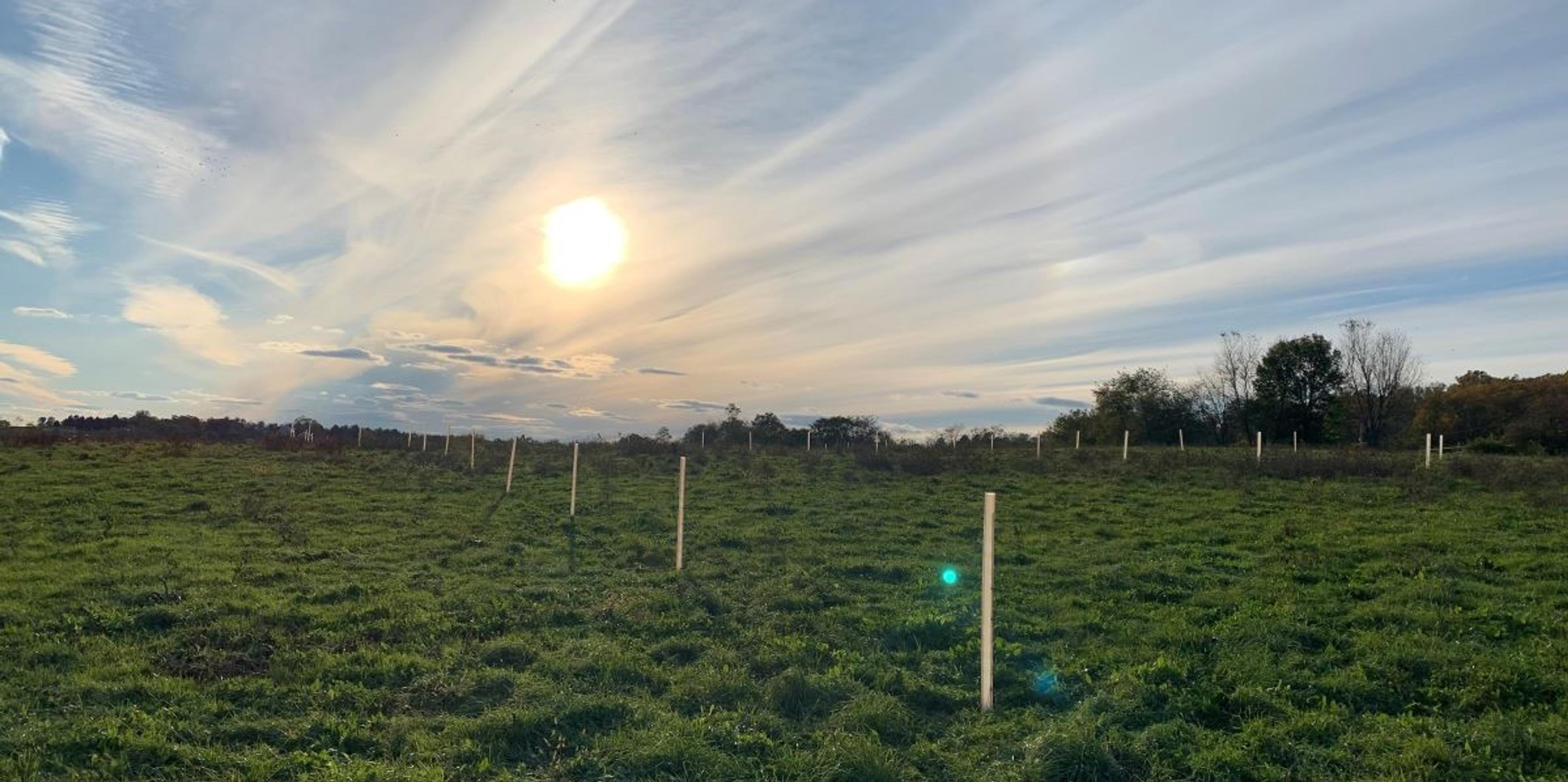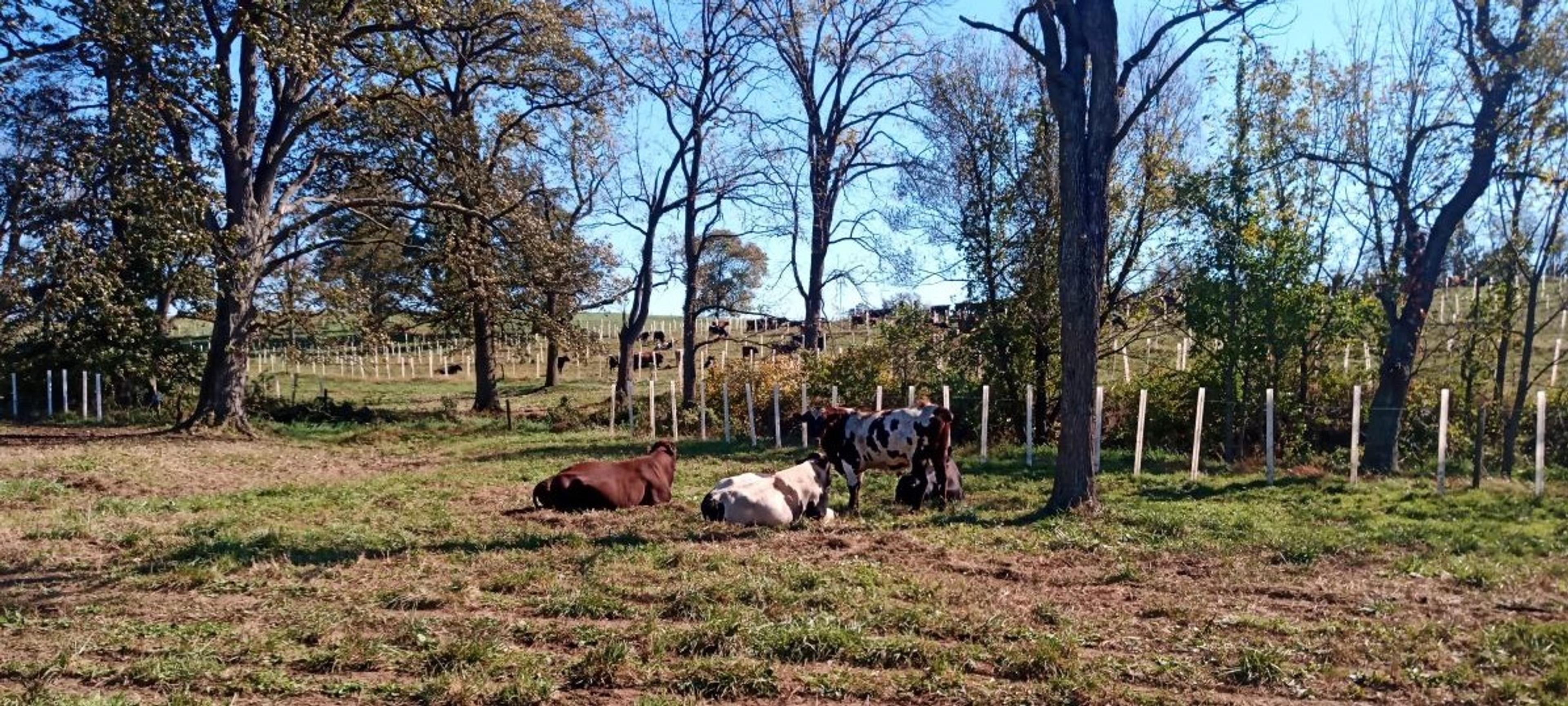
Earth
What Is Silvopasture?
Who doesn’t love sitting under a tree, enjoying a summer breeze and a picnic with friends? The shade is welcome and the sound of life surrounds everything.
Cows on Organic Valley farms agree, enjoying shade and nature by eating outside with friends is a great way to spend a day. On five small Organic Valley family farms in Pennsylvania, summers for cows will be filled with grazing green pastures under the shade of trees thanks to the pioneering agroforestry practice called silvopasture.
Animals, Trees and Pasture
Silvopasture is the thoughtful pairing of trees, pasture and grazing animals like cows and sheep to create a healthy ecosystem and stable farm income for generations. The U.S. Department of Agriculture has an in-depth definition of silvopasture systems.
The philosophies and principles of this kind of agroforestry farming are fascinating. Trees, grass and cows sound like a perfect fit, and for many farms, silvopasture is the next significant step for rotationally grazed cows. Rotational grazing, or moving cows from one area of pasture to the next on a daily, strategic basis, is a natural fit with silvopasture.
Some of the main benefits of silvopasture projects include more natural comfort for cows, like shade in the summer heat and windbreaks in the colder days of winter. Since Organic Valley farmers are always trying to improve the health of their small herds of cows, silvopasture is a great tool to add to their continually growing skillset.
While the animal comfort benefits of silvopasture are certainly great, the diversified income stream that can result from successful tree plantings can help the next generation of small family farms survive and thrive on the rural American landscape.
Since silvopasture can be profitable for small farms and beneficial to the earth by sequestering carbon and improving wildlife, Organic Valley is working with five of our small family farms in Pennsylvania to plant silvopasture. These five farms will help us pilot a program that could be a new tool for any interested farms.
What Does Silvopasture Look Like?
Silvopasture projects can range from a dozen trees to hundreds and the scope of Organic Valley's pilot project shows just how this technique can fit a variety of farms. Our Pennsylvania farmer-members are experimenting with tree plantings of 50 trees, 80 trees and 200 trees by working with Trees for Graziers, an innovative company led by Austin Unruh committed to creating more diversity, resilience and profit through trees.

The sun shines on newly planted trees at an organic farm in Pennsylvania.
Trees are typically planted in rows with plenty of spacing to help farmers continue to harvest forages while the trees establish and give cows the room they need to graze. Since trees don’t grow as fast as grass, picking suitable trees is essential. You will see spaced groves of honey locust, persimmon and other late-fruiting trees on many silvopasture plantings. These trees help provide great, natural nutrition to cows during the winter as the fruit falls as late as December (depending on the climate and region).
Because these beautiful trees grow pretty quickly, are resilient, and produce great food options for cows, you are also likely to see some smiling farmers on these silvopastures. Early estimates show that a 100-acre farm planting silvopasture can nearly double the food produced for cows per acre when conditions are favorable. So, instead of buying more land, small farms can stay small and improve their overall profitability while the trees sequester carbon and help reverse climate change.
Why is Silvopasture Important?
Silvopasture is yet another tool to help save small family farms and reverse climate change. While this project is small with just five Pennsylvania family farms to start, it can be a template for the other 249 Pennsylvania Organic Valley farmer-members. Silvopasture might also be an option for our farms in Vermont, Wisconsin, Oregon and the other 1,700 Organic Valley farms across the country. Organic Valley farmer-members are interested in diversifying farm income and feed production while improving the health of their animals, communities and planet.
“Silvopasture is a carbon farming practice that has great potential to make meaningful change," said Nicole Rakobitsch, Organic Valley director of sustainability. "It is one of the top 10 practices we have identified with a high rate of carbon sequestration but also provides many co-benefits such as shade for livestock and habitat for wildlife.”

Cows are seen near newly planted trees (in the plastic tree tubes) at Springwood Dairy in Pennsylvania.
At Organic Valley, we constantly look for ways to help small family farms survive and thrive, like recent on-farm solar projects and a satellite grazing technology pilot program.
With an average herd size of just 49 cows, Organic Valley farmer-members in Pennsylvania are uniquely positioned to benefit from silvopasture. These small family farms will establish trees that give comfort to today’s herds and produce for the next generation of farmers, helping bolster the small family farms that are increasingly rare and integral to their communities.
Silvopasture can improve the health of the land, the animals and the lives of the people who steward them.
Joshua Fairfield is the cooperative public relations manager at Organic Valley, but in his spare time dreams of creating an organic farm built from the ground up to increase biodiversity and protect life. He enjoys good books read by firelight, trying new (and old) gardening techniques and writing about the natural, beautiful systems on organic farms.
Related Articles
- Tags:
- climate,
- environment,
- grass-fed,
- land stewardship & conservation,
- regenerative agriculture,
- soil health & science,
- biodiversity


















